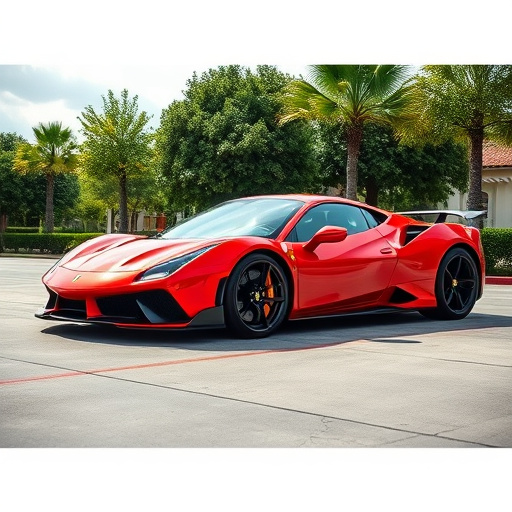Universal Cold Air Intake (CAI) kits offer improved engine performance by redirecting outside air for better fuel combustion. With proper consideration of vehicle make, model, and year, these kits ensure seamless fit and efficient airflow, enhancing engine responsiveness while potentially saving weight and costs. Installation requires consulting service manuals and inspecting existing intakes to guarantee optimal compatibility and leak-free connections.
In the realm of automotive enhancements, custom-fit universal systems like Cold Air Intake (CAI) kits have gained popularity. These kits promise improved engine performance by delivering cooler and denser air, but their success hinges on compatibility. This article guides you through understanding universal CAI kits, focusing on key factors affecting their compatibility with various vehicle makes, models, and years. We’ll also provide expert tips for installation to ensure optimal performance from your universal cold air intake kits.
- Understanding Universal Cold Air Intake Kits: Design and Benefits
- Factors Affecting Compatibility: Vehicle Make, Model, and Year
- Maximizing Performance: Installation Tips for Optimal Universal CAI Kits Compatibility
Understanding Universal Cold Air Intake Kits: Design and Benefits

Universal Cold Air Intake (CAI) kits are designed to enhance engine performance by improving airflow into the combustion chamber. These kits, offering superior compatibility across various vehicle models, are a popular choice among car enthusiasts and tuners. The core design principle involves redirecting outside air directly into the engine, bypassing the restrictions of the stock intake system. This simple yet effective modification allows for increased oxygen flow, leading to better fuel combustion and, consequently, improved horsepower and torque.
The benefits extend beyond performance gains. Universal CAI kits often boast lightweight materials, contributing to potential weight savings and enhanced fuel efficiency. Their design also promotes cooler air intake, which can lead to reduced turbulence and improved engine responsiveness. With their broad compatibility, these kits offer a cost-effective way to customise vehicle performance without extensive modifications, making them an attractive option for those seeking both aesthetics and functionality.
Factors Affecting Compatibility: Vehicle Make, Model, and Year

When considering universal cold air intake kits, one of the primary factors affecting their compatibility is the vehicle’s make, model, and year. These systems are designed to fit a wide range of vehicles, but specific models may have unique characteristics that impact installation and performance. The make and model determine the overall architecture of the vehicle’s engine bay, including space constraints and mounting points for various components. For instance, a universal kit might require adjustments to fit the contours of an older car’s engine compartment compared to a newer, more standardized design.
Additionally, the year of production can play a role due to advancements in automotive technology and design changes over time. Older vehicles may have different air intake requirements or restrictions compared to their newer counterparts. Compatibility also depends on the specific cold air intake kit’s design and features, such as its size, shape, and mounting hardware, which should align with the vehicle’s engine bay layout for seamless installation and optimal performance of the universal cold air intake system.
Maximizing Performance: Installation Tips for Optimal Universal CAI Kits Compatibility

When installing a universal cold air intake (CAI) kit, ensuring optimal performance and compatibility is key. Universal CAI kits are designed to fit various vehicle models, but achieving maximum efficiency requires proper installation techniques. One crucial tip is to consult your vehicle’s service manual for specific guidelines related to engine compartment clearance, wiring, and component placement. This ensures that the intake system fits seamlessly without compromising any vital components.
For optimal compatibility, start by inspecting your vehicle’s existing air intake and comparing it to the kit’s specifications. Ensure that the CAI’s size, shape, and mounting points align with your car’s design. Proper alignment is essential for smooth airflow, preventing restrictions that could hinder engine performance. Additionally, double-check all connections and seals to guarantee a secure fit, minimizing leaks that may reduce the system’s overall effectiveness.
Universal cold air intake (CAI) kits offer a cost-effective way to enhance engine performance, but ensuring optimal compatibility is key. By considering vehicle make, model, and year, along with thoughtful installation practices, you can maximize the benefits of these custom-fit systems. Remember, proper fitment ensures not only improved power and fuel efficiency but also a seamless integration into your vehicle’s existing components, making it a popular choice among car enthusiasts seeking that extra edge.














